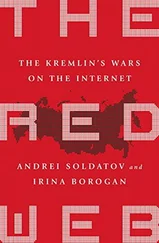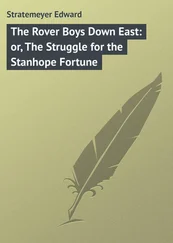It was Cavagnari and Campioni who lost their jobs. De Vecchi and Badoglio too, were dismissed. In order to protect its leader, the revolution began to eat itself. 97 Days later, further humiliation was heaped on the Italians. Wavell, well equipped with supplies delivered from both the Mediterranean and the Red Sea, ordered an attack in North Africa. Wavell’s idea was to secure Egypt by the recapture of Sidi Barrani. He did not believe that he was launching a great offensive, indeed his intention was to shift the main direction of operations against Mussolini’s swollen east African empire, once he had secured the Libyan position. This was not quite what Churchill had in mind: that the Italians should be ‘ripped off the African shore. Wavell’s operation was more in the nature of a raid. Whilst a diversionary force made its way along the coast road from Mersa Matruh towards Sidi Barrani, the main ‘Western Desert Force’ swung through the desert to the south. Their targets were the huge camps that Graziani had been happily building around Sidi Barrani. As the troops reached the target, they peeled off to the left and right, each unit taking its assigned camp. Although the movement of British forces was spotted by Italian aircraft, surprise was almost complete. The camp-dwellers either surrendered or fled back down the coast.
Within a few days all the settlements along the Egyptian coast were back in British hands. Sollum, ‘the most distinctive spot in the Western Desert’, where immense 600-foot-high cliffs falling from the desert plateau clipped the Mediterranean coast, was recaptured on 16 December 1940. From upper Sollum, the British once more surveyed the great curve of the bay to the Libyan frontier. They were as impressed by the Italian improvements to the comfort of life as they were disparaging about Italian efforts at fighting. Emboldened by this success Wavell met with Cunningham and Arthur Longmore in Cairo. They agreed that they could move part of the way with Churchill’s demand for ‘ripping the shore’. An advance into Cyrenaica would be possible in the New Year, its target Mediterranean ports, first Bardia, but ultimately Tobruk. 98
On the day Sollum fell, Churchill lamented that the future was quite unclear. Hitler might involve himself with the Balkans, but Churchill thought that this was unlikely. He might take over the Italian war effort, unlikelier still since ‘that would not be a victory for him’. Churchill’s best guess was that the Germans would come to the Mediterranean to take over French North Africa. 99 In fact Hitler’s mind was elsewhere: he was busy issuing the order for ‘Barbarossa, the invasion of the Soviet Union. 100 Two days after the Barbarossa decision Mussolini reluctantly admitted to his confederates that, sooner or later, they were going to have to ask for Germany’s help. 101
The Mediterranean image of early 1941 was columns of marching men. They wore Italian uniform and they were walking towards Egypt in great snakes of humanity. They did not come as victors but as the defeated. Hundreds of thousands of Italian soldiers trudged towards captivity, their journey immortalized by eager pressmen. Wavell’s ‘raid’ just kept heading west. On 4 January 1941 Wavell’s forces captured Bardia. Eighteen days later they reached Tobruk. Wavell had given his field commander, General O’Connor, two divisions for the campaign. They faced up to ten Italian divisions. The numbers of tanks possessed by each side was more even. Indeed the British and Italian tank forces were roughly equivalent both in terms of numbers and quality. The Italian tanks were grouped together in the elite Brigata Corazzata Speciale commanded by General Babini. At Tobruk O’Connor split his forces, sending the 7th Armoured Division towards Mechili, inland, where he believed that the main body of Italian tanks was deployed. His Australian infantry carried on along the coast towards the town of Derna. On 24 January 1941 the two tank forces ran into each other near Mechili. The battle itself was indecisive. The Italians lost nine tanks, the British seven. Some of the Italian tankers believed that they had done enough damage to start a counter-attack. Graziani, however, would not hear of it. The battle was no more than a delaying action. On 3 February he withdrew from Benghazi. He told Mussolini that they would have to abandon Cyrenaica altogether. His aim was to send his forces to the end of the Balbia. They would hold the Sirtean desert as the forward defence line for Tripoli. There were rumours of much greater (and non-existent) British tank forces on the way.
Accordingly, Babini disengaged his force and retreated to the west. He and O’Connor still had equal numbers of ‘cruiser’ tanks. It was thus with some trepidation that O’Connor put forward a daring plan for the next stage of the advance. Instead of reuniting his forces he would send the armoured division south-west on a short-cut across the desert. They would try to cut the Balbia far to the south of Benghazi, rather than following the coast, taking each town in turn. Wavell and O’Connor met at Tmimi on the road to Derna on 4 February 1941: Wavell approved the plan. Thereafter events moved with great speed.
The reconnaissance elements of the 7th Armoured Division spotted Graziani’s 25,000-strong force retreating along the Balbia on 5 February. By the evening the tank forces themselves had reached the road near the small settlement of Beda Fomm. From a small hill by the roadside, known as ‘the Pimple’, they could survey a fourteen-mile stretch of road. They had reached ‘the Pimple’ before the Italians and thus cut off their line of retreat. It was up to Babini’s tanks to force a way through. The Italian tank force advanced with elan only to run into the dug-in British tanks. The Italians took heavy casualties. Nevertheless, about thirty tanks managed to force their way onto the road south of ‘the Pimple’. The Italian force was thus split. Most of the troops were stuck north of ‘the Pimple’. A powerful independent force of tanks was to the south of the hill, their escape route blocked only by a battalion of the Rifle Brigade supported by a battery of the Royal Horse Artillery. The next day the Italian tanks tried to make their breakthrough. The British gunners held firm, however, continuing to fire until the last of the desperate tanks stopped short of their line. By nine o’clock in the morning of 7 February 1941 it was all over. The Italian main force, deprived of its tanks, and with the Australians coming up behind them on the Balbia, surrendered. ‘Fox killed in the open,’ the triumphant British field commander signalled Wavell. 1
In Rome they could barely believe what was happening to the ‘fourth shore’. The intelligence system that had once proved so adept at extracting juicy morsels from diplomats, failed to keep pace with the battle. The Fascist elite was reduced to listening to BBC radio broadcasts. First, news would arrive of defeat. Then garbled accounts of brave resistance would take its place. Mussolini made the final arrangements for his tryst with Hitler only when he had convinced himself that the defence of Bardia would restore honour to Italian arms. Surely, he would wail to his advisers, the generals would stop the English. The ‘heroic infantryman’ or the ‘king of artillery’ would find a way If not the generals, then the fortifications would delay the advance. If the fortifications failed, then the very land would provide succour. The British could not fight their way through desert and along coast. The task of working up and down the cliffs would prove too much. Finally, the full scale of defeat would become clear and recrimination would follow. At that moment news would arrive of yet another humiliating defeat by the Greeks. 2
Читать дальше












